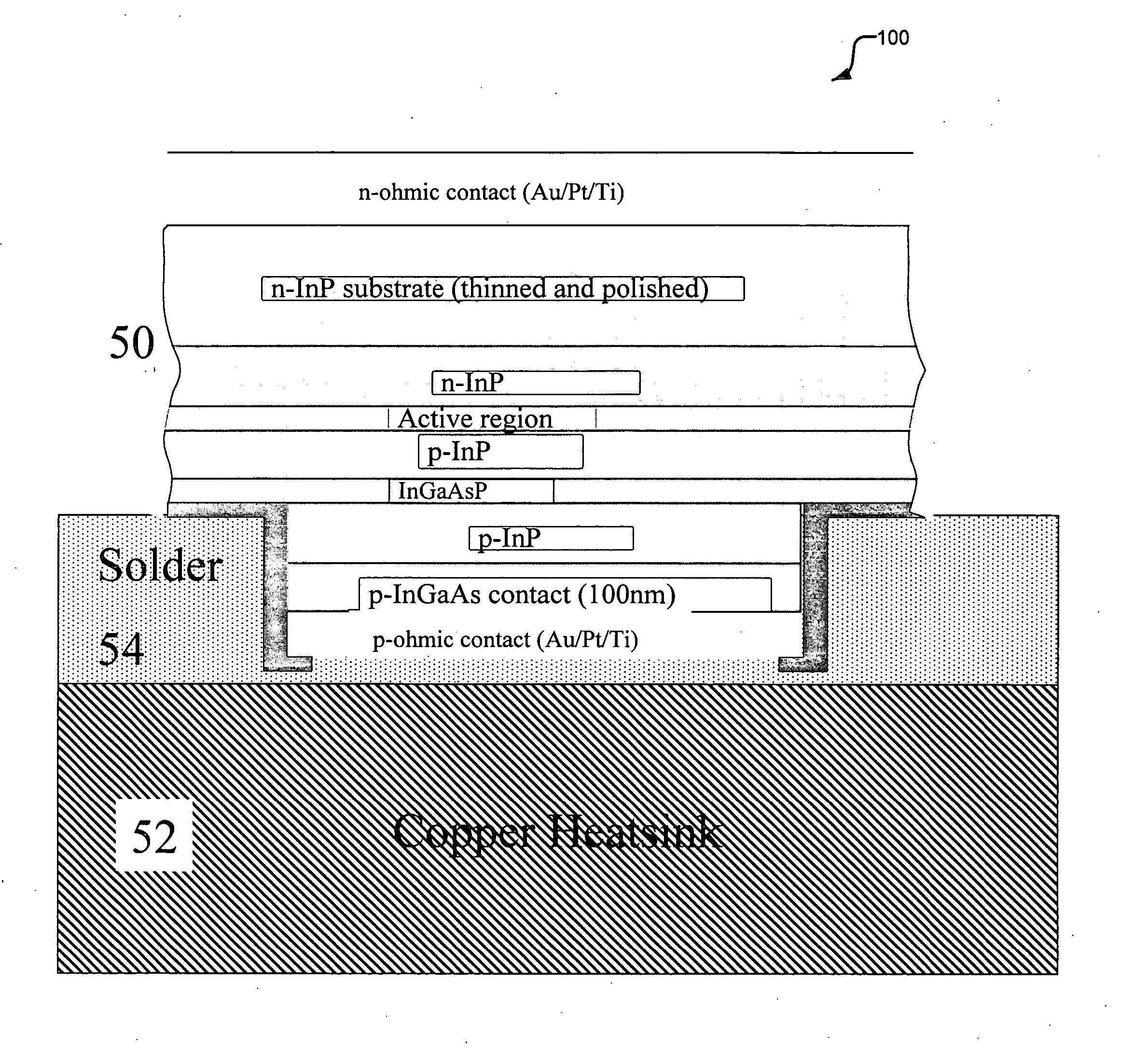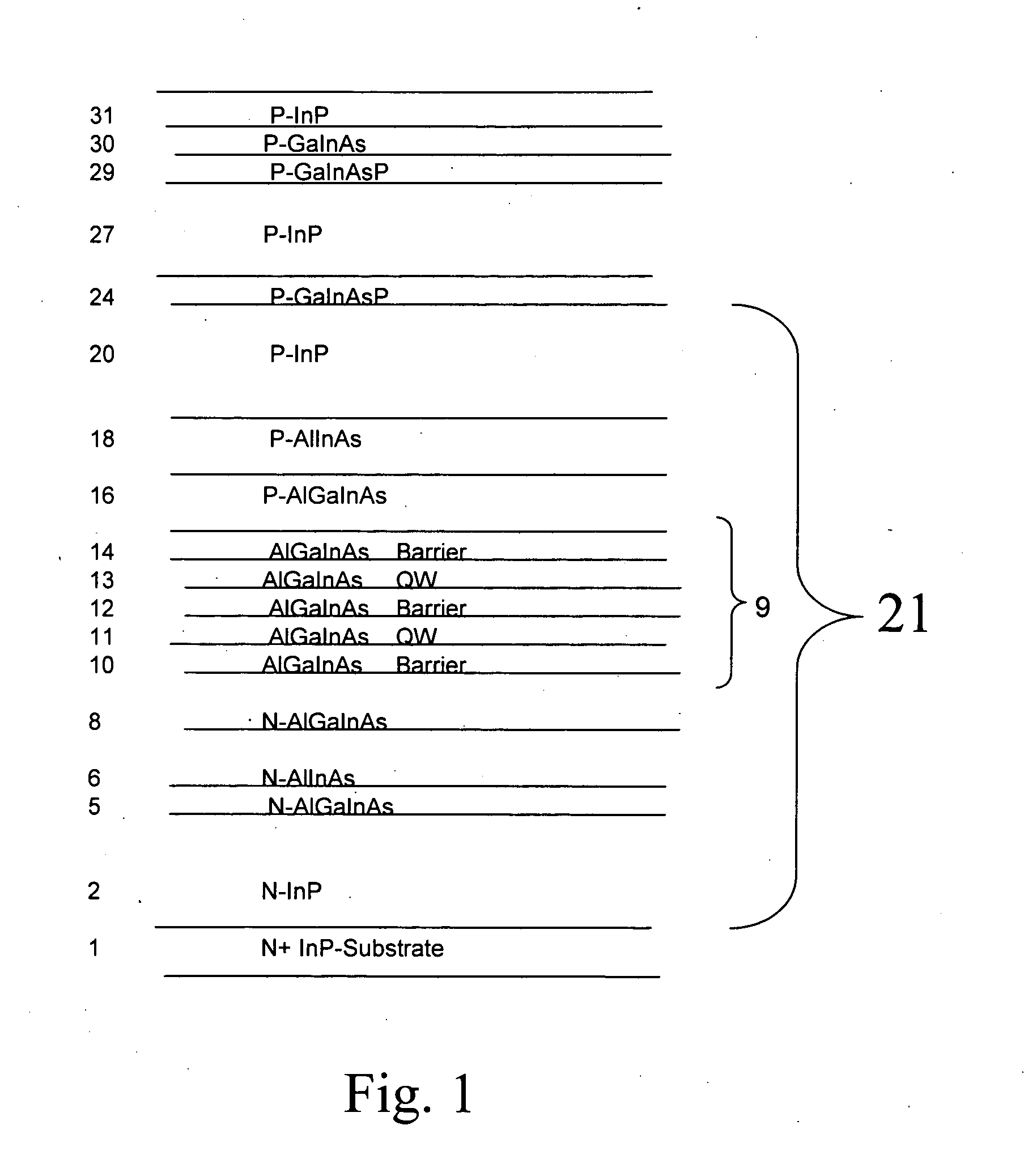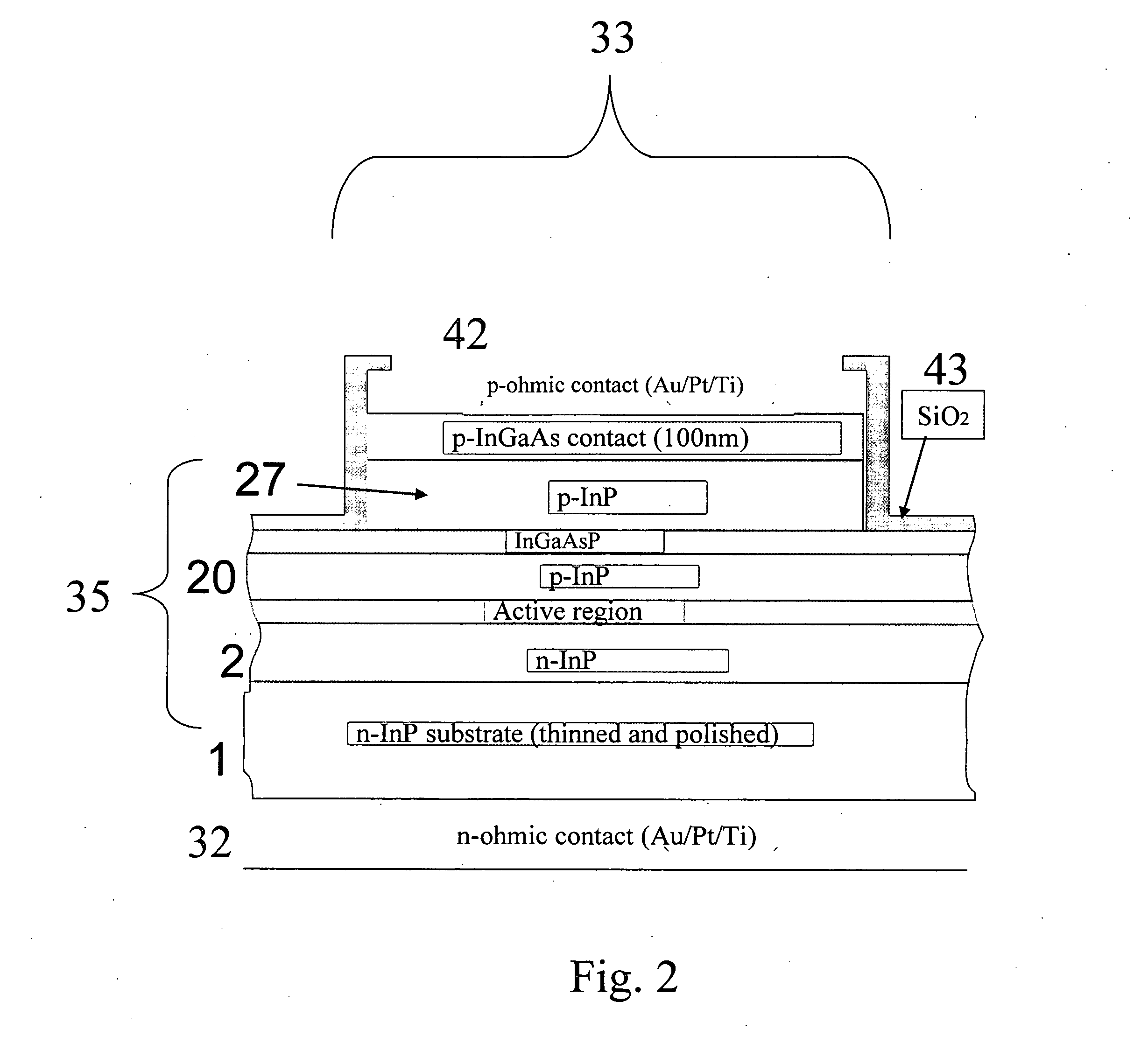High-power infrared semiconductor diode light emitting device
- Summary
- Abstract
- Description
- Claims
- Application Information
AI Technical Summary
Benefits of technology
Problems solved by technology
Method used
Image
Examples
Embodiment Construction
[0023]FIG. 1 shows the layer structure of a semiconductor light emitting device that has been constructed according to the principles of the present invention.
[0024] Specifically, a listing of the epitaxial structure shown. It was fabricated or prepared using conventional III-V compound semiconductor epitaxial growth techniques such as metal organic chemical vapor deposition OMCVD (also referred to as MOCVD) and molecular beam epitaxy (MBE). The starting substrate 1 is n-type InP, on to which the sequence of layers is epitaxially grown using known methods.
[0025] Beginning from the substrate 1, a 1 micrometer thick n+InP lower cladding layer 2 with a silicon (Si) doping concentration of 3×1018 cm−3 is grown followed by a transition region 15 nm thick of lattice matched, graded (Al0.68Ga0.32)0.47In0.53As to Al0.48In0.52As 5-6 into the separate confinement heterostructure (SCH) layers 6-18. Next is the lower graded-index (GRIN) layer 8, which is 45 nm thick beginning with Al0.48In0.5...
PUM
 Login to View More
Login to View More Abstract
Description
Claims
Application Information
 Login to View More
Login to View More - R&D
- Intellectual Property
- Life Sciences
- Materials
- Tech Scout
- Unparalleled Data Quality
- Higher Quality Content
- 60% Fewer Hallucinations
Browse by: Latest US Patents, China's latest patents, Technical Efficacy Thesaurus, Application Domain, Technology Topic, Popular Technical Reports.
© 2025 PatSnap. All rights reserved.Legal|Privacy policy|Modern Slavery Act Transparency Statement|Sitemap|About US| Contact US: help@patsnap.com



